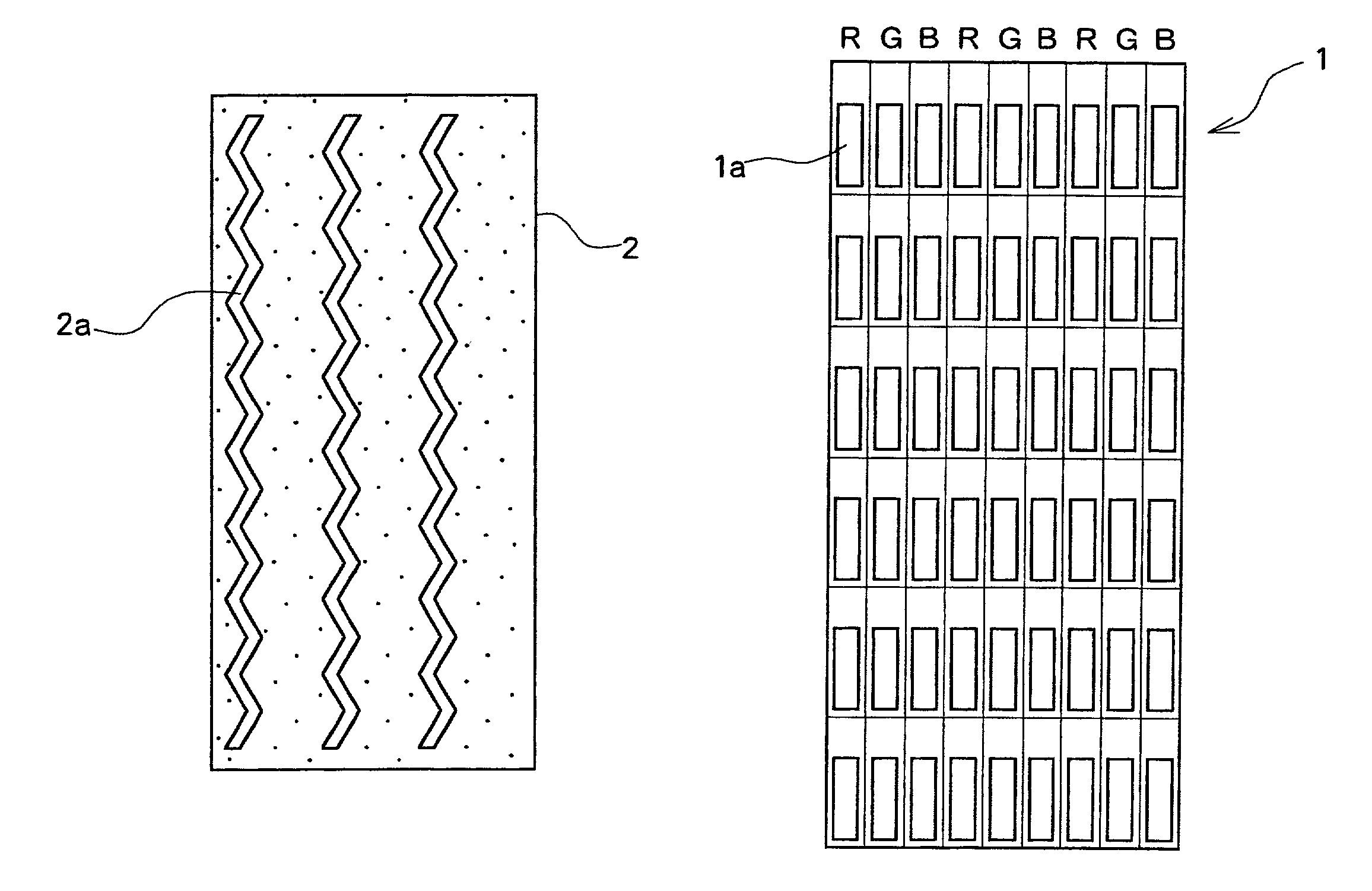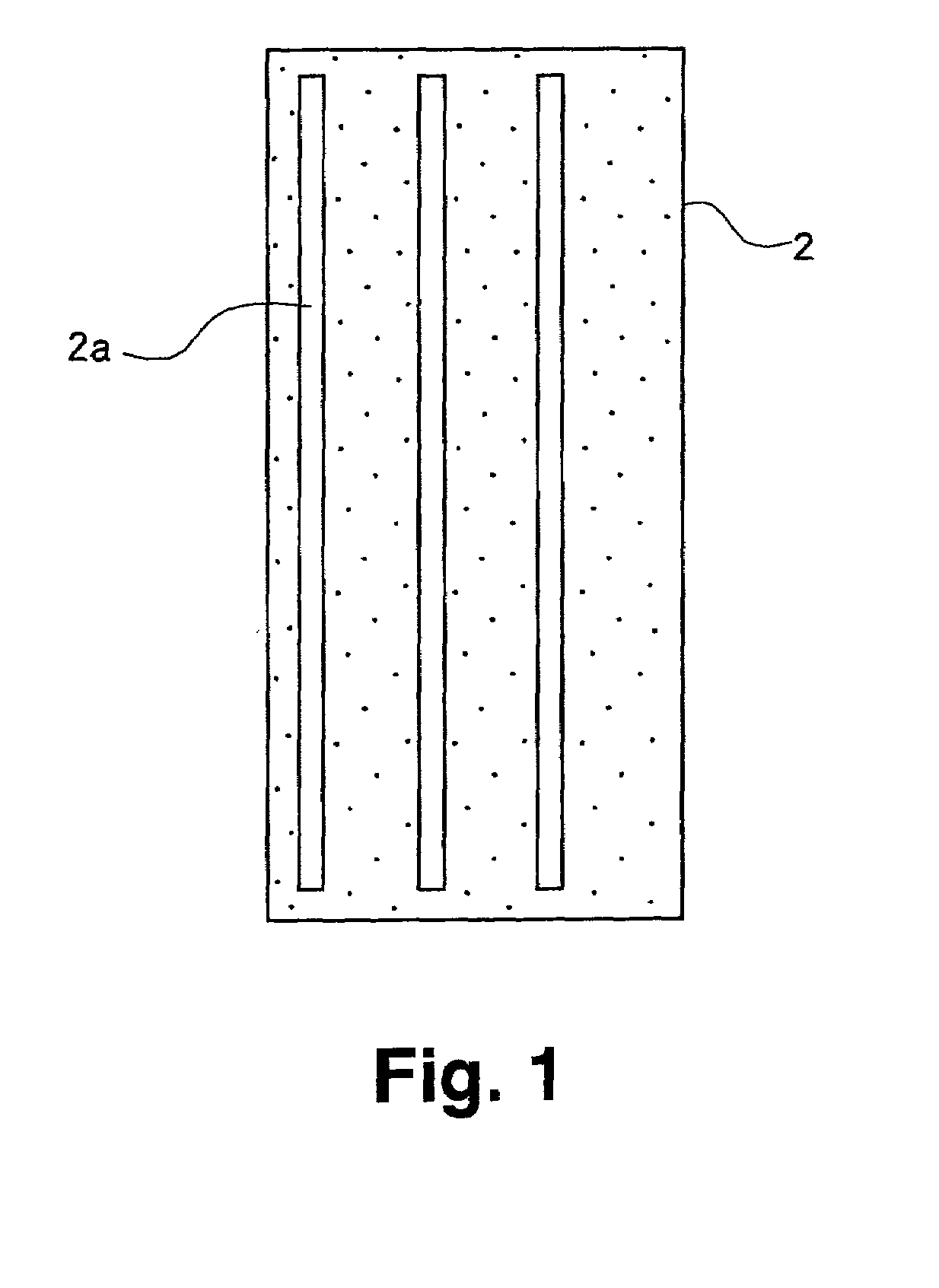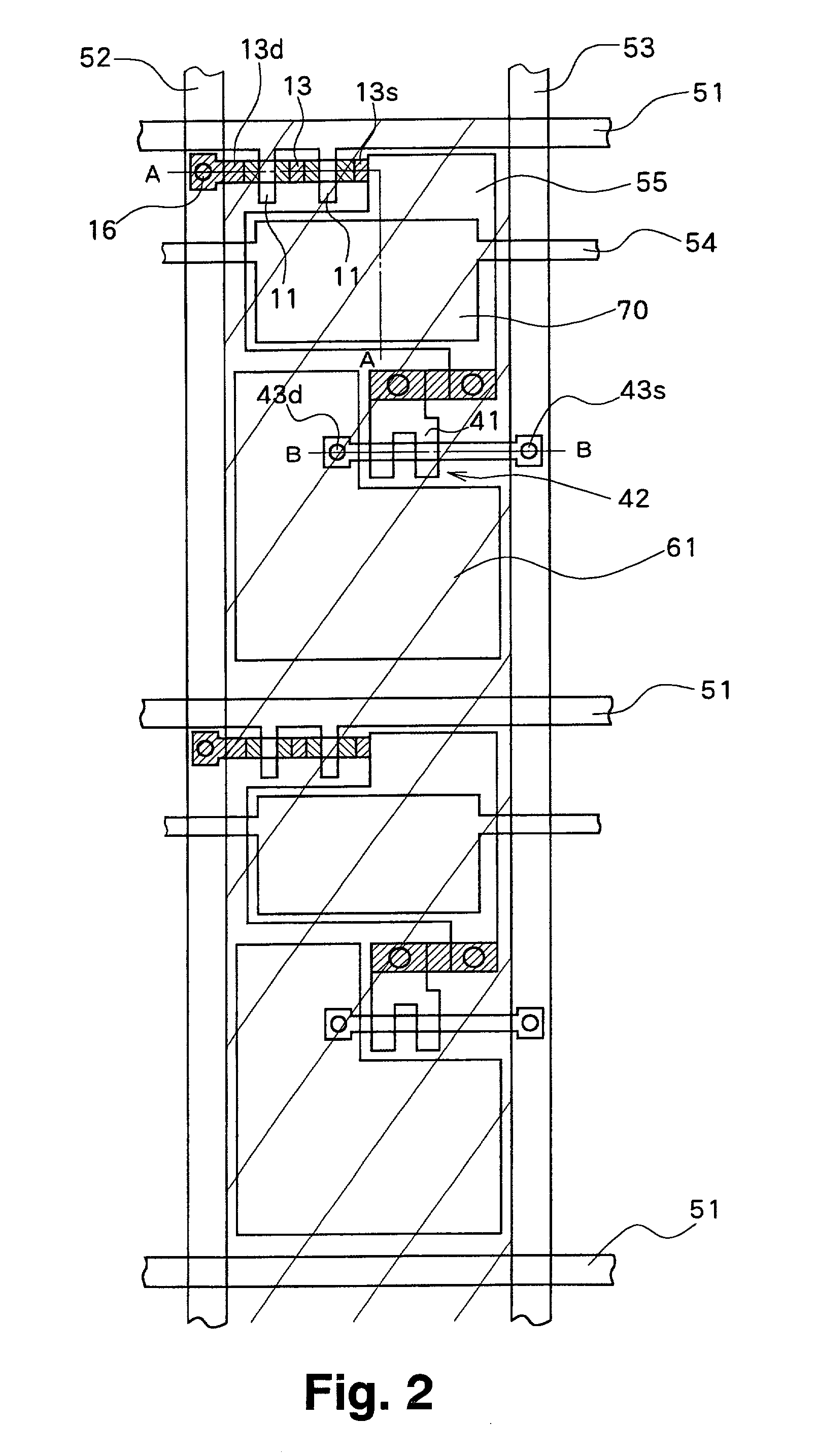Light-emitting device and light-emitting device manufacturing method
- Summary
- Abstract
- Description
- Claims
- Application Information
AI Technical Summary
Benefits of technology
Problems solved by technology
Method used
Image
Examples
Embodiment Construction
[0035]The embodiments of the present invention will be described hereinafter with reference to the drawings while taking an organic EL display as an example.
[0036]FIG. 1 shows a configuration of the shadow mask 2 for the formation of the organic emissive layer 63 relating to the present embodiment. In the conventional mask shown in FIG. 9 are discrete openings 2a corresponding to the respective pixels. In the present embodiment are openings 2a that are in common among adjacent pixels. More specifically, for a particular color, the R pixels, for example, the R pixel group is arranged linearly in a column. The opening 2a for forming the R pixels is also arranged linearly in a column so that the opening 2a is in common among adjacent pixels. This yields the opening 2a as a stripe shape as shown in the figure. The width of the opening 2a corresponds to the width of one pixel and the length is determined according to the number of pixels to be in common. Namely, if the organic emissive l...
PUM
 Login to View More
Login to View More Abstract
Description
Claims
Application Information
 Login to View More
Login to View More - R&D
- Intellectual Property
- Life Sciences
- Materials
- Tech Scout
- Unparalleled Data Quality
- Higher Quality Content
- 60% Fewer Hallucinations
Browse by: Latest US Patents, China's latest patents, Technical Efficacy Thesaurus, Application Domain, Technology Topic, Popular Technical Reports.
© 2025 PatSnap. All rights reserved.Legal|Privacy policy|Modern Slavery Act Transparency Statement|Sitemap|About US| Contact US: help@patsnap.com



